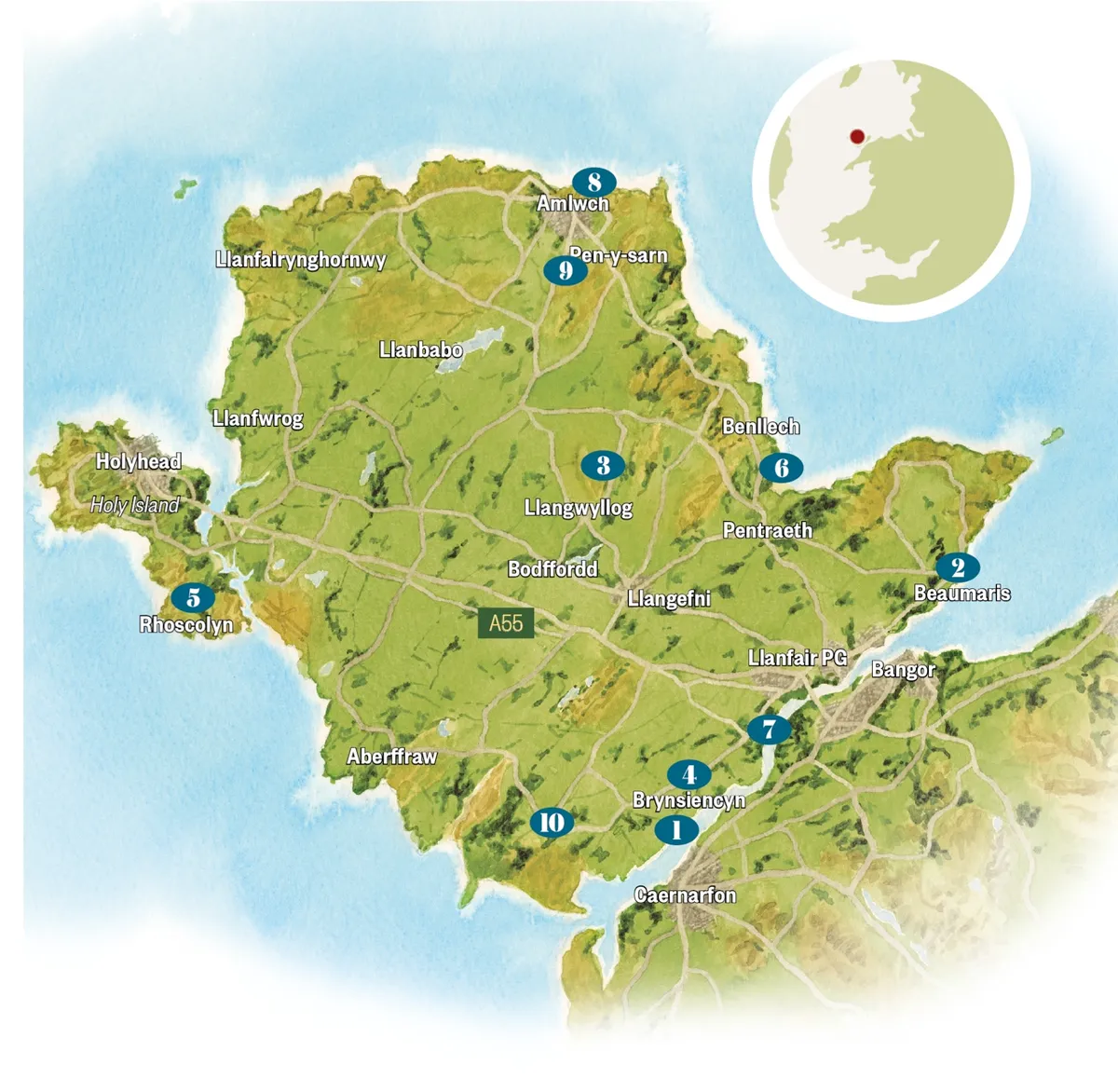Located off the north west coast of Wales, the island of Anglesey has long been one of my favourite parts of the British Isles. My first visit, more than 25 years ago, often feels as if it were yesterday.
In those days, I was a young archaeology undergraduate, and in the balmy summer of 1990 I found myself with around 30 other young chums studying and surveying the ancient burial mound at Bryn Celli Ddu, one of the most important Neolithic chambered tombs in Britain. As the summer unfolded and the stress of exams faded into the past, Anglesey felt like a refuge. Day by day, the island revealed itself and its people to be a wonderful, welcoming and enchanting place, full of history and mystique, and with a rich cultural identity that only island life can conjure.
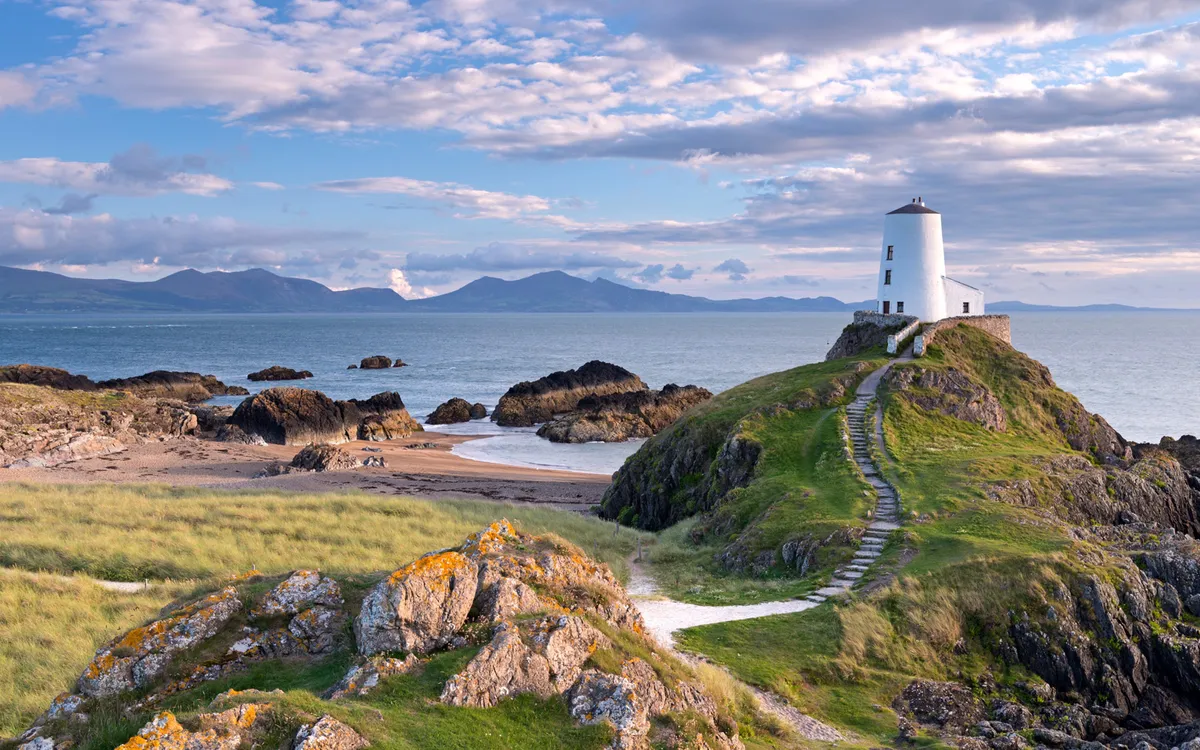
Since then I have continued to explore Anglesey, and to revel not just in its history, but in the rich diversity and beauty of its landscapes and coastlines. It is a place I never tire of, and one that never ceases to both surprise and inspire me.
If you have never been before, the first sense that you’re heading into a different world is obvious as soon as you cross the imposing and treacherous Menai Strait – and the eight-knot tide that races through it is notorious.
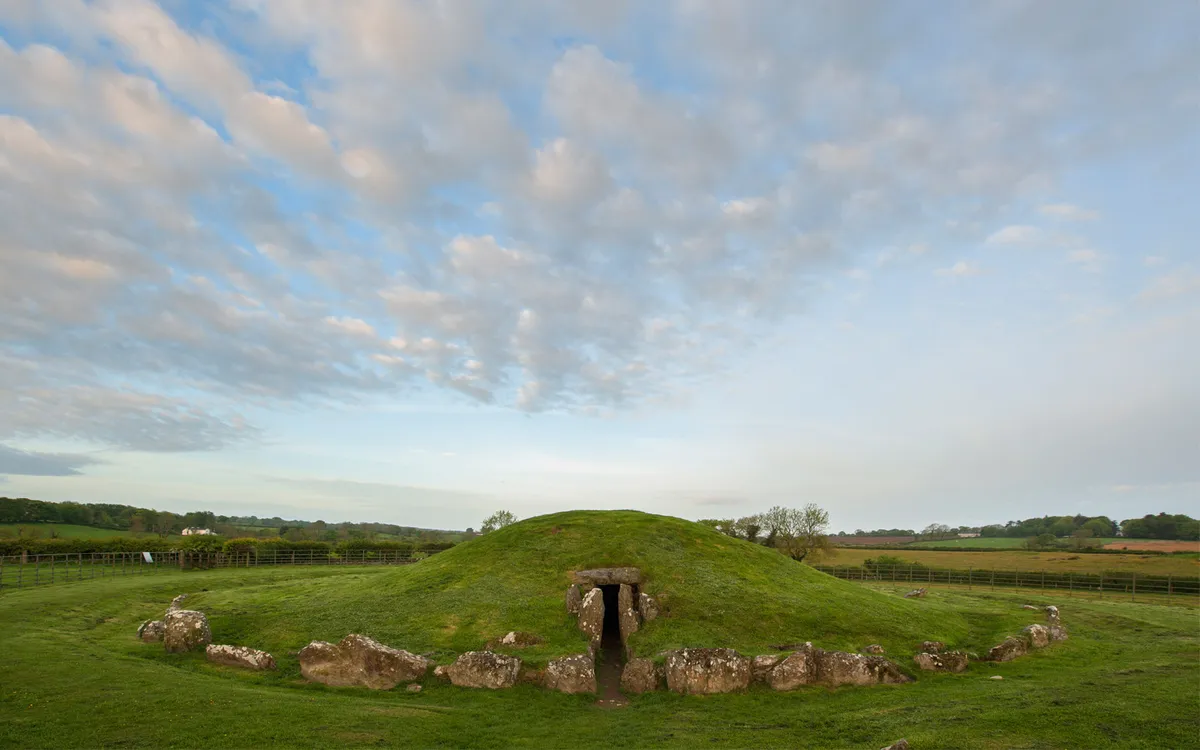
Anglesey is linked to the mainland by two beautiful bridges. The first, which carries the A5 over the Strait, is a wonder of the Industrial Revolution: the Menai Suspension Bridge, designed by Thomas Telford and opened in 1826. The biggest iron suspension bridge then built, it was the culmination of a career forged during one of the most exciting periods in British history, and a fitting testimony to a man who helped define the emerging science of engineering.
Telford’s example was soon followed by Robert Stephenson’s, whose Britannia Bridge – a great tubular iron structure, completed in 1850 – carried the new railway to Holyhead and reinforced the island’s role as the gateway to Ireland just 50 miles across the Irish Sea. Renovated following a fire in the 1970s, and re-engineered to carry the A55 in 1980, this crossing over the Menai now provides a fabulous view of Telford’s original, and Church Island, braced against the currents some 40 metres below.
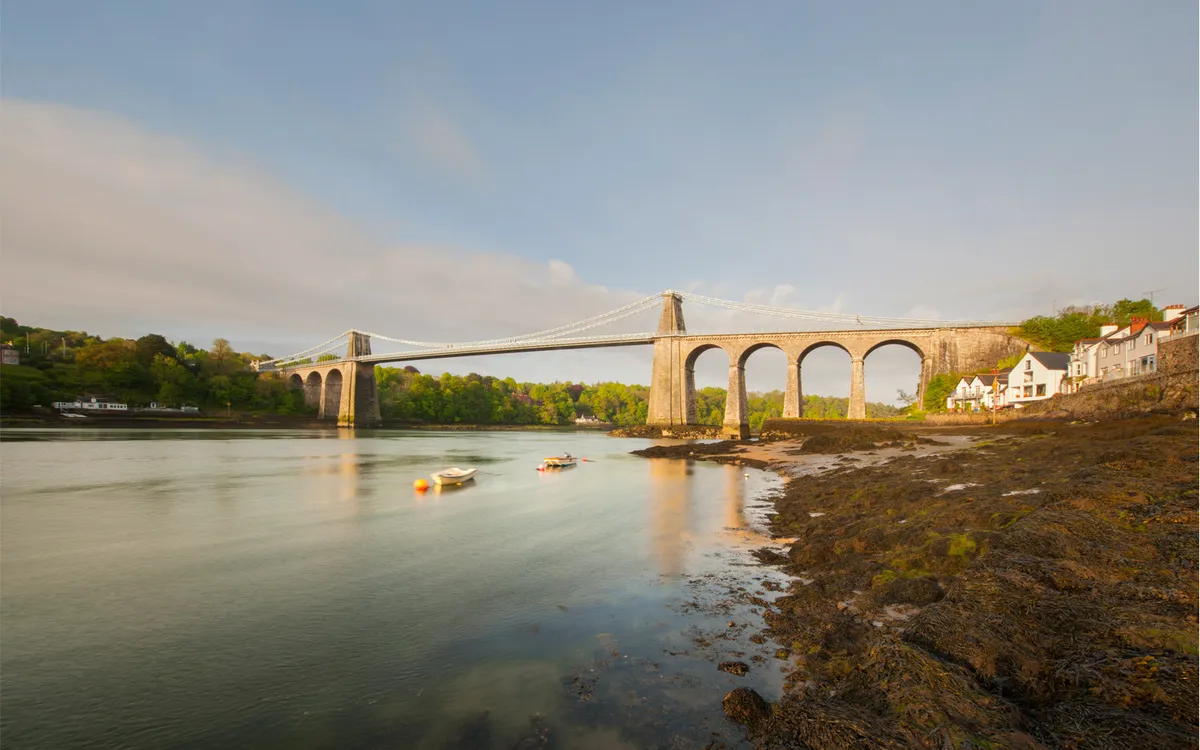
History of Anglesey
There are numerous routes and landmarks to recommend on any visit, but heading west and clockwise around the coastline is a good way to start. Taking the road to Newborough will carry you past the Plas Newydd estate, ancestral home of the Marquis of Anglesey, the first of whom famously lost a leg while fighting alongside Wellington at Waterloo. It’s also home to Bryn Celli Ddu, where I spent many a fascinating summer long ago. The mound itself covers a simple stone chamber, and at some 4,000 years old, it is one of the finest of its kind.
The prehistoric settlement of Anglesey has close ties with that of Ireland, and raises intriguing questions about maritime exploration thousands of years ago. Legend has it that if you sleep in the chamber during the summer solstice you’ll wake up either a poet – or mad. As students of course we tried it, but the results weren’t clear.
Heading to the west coast, you pass yet another fabulous entry in Anglesey’s prehistoric repertoire – Barclodiad y Gawres. This much-excavated tomb, complete with some wonderful Neolithic carvings, sits on a dramatic promontory and affords some spectacular views of the island’s western coastline, from Newborough in the south right up to Holy Island in the north.
A welcoming and enchanting place, full of history and mystique
Many years ago, some close friends of mine had a holiday cottage at Rhoscolyn Bay. A simple affair, it had its own access to the beach, and with boats and dinghies to play with, we spent many hazy days exploring the coast around the bay itself. It’s a timeless place with a magic all its own. Complete with yet another prehistoric tomb overlooking the bay, it’s a great spot to get away from it all, and the reinvented White Eagle Inn is now a popular haunt for holidaymakers and locals alike. If you’re a fan of the cult film Local Hero, Rhoscolyn is for you. It wasn’t filmed here, but the bay evokes a similar atmosphere. Just don’t forget to bring the soundtrack with you, along with a bottle of something to enjoy while the sun goes down.
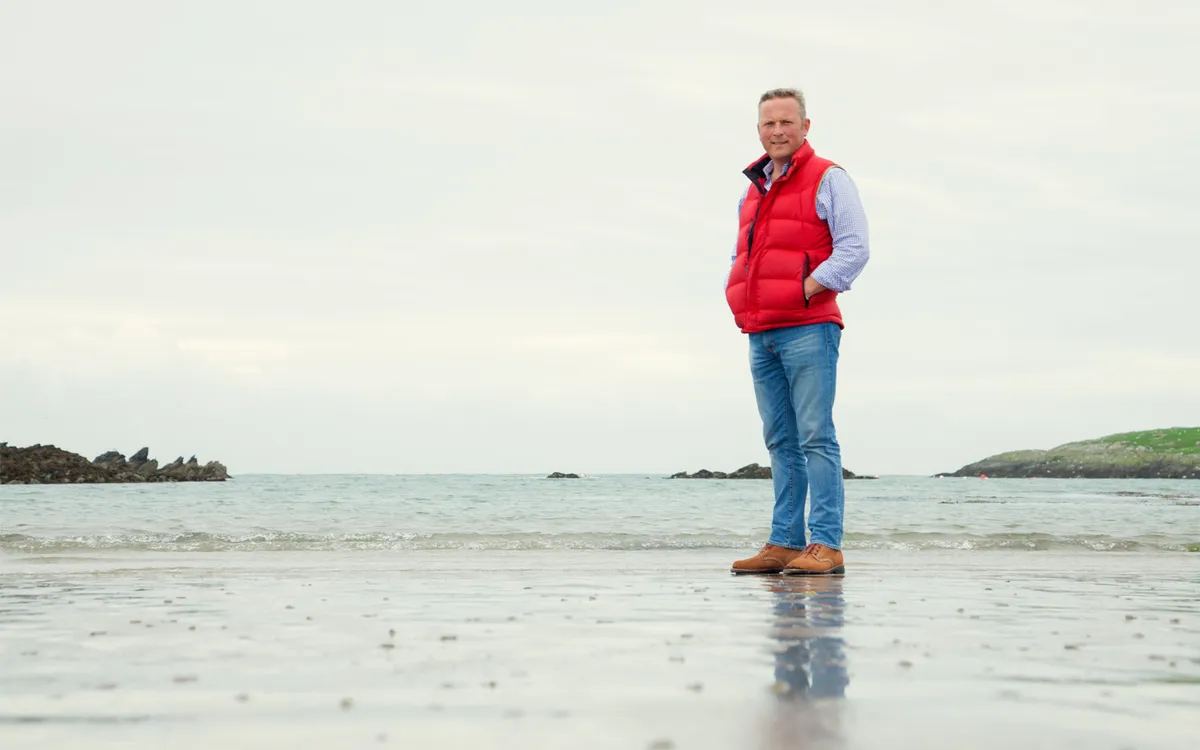
Coastal landmarks
Next to its famous bridges, South Stack, at the most westerly tip of Holy Island, is one of Anglesey’s most famous landmarks. The sheer cliffs that rise up out of the sea are a world-recognised nature reserve that is home to flourishing colonies of puffins, guillemots and razorbills.
The lighthouse, which is now open to the public, perches stubbornly on a low-lying promontory. Built in 1809, it has played a vital role in helping to safeguard countless mariners from its perilous shore. Over many centuries, hundreds of ships of all kinds have foundered around the island’s treacherous coast, and in a stiff wind, with the sea crashing in over the rocks, it’s not hard to see why. Anglesey’s wrecks are popular among divers, but a visit to the lighthouse offers an easier way to get a handle on the island’s rich maritime history, as does Holyhead Maritime Museum.
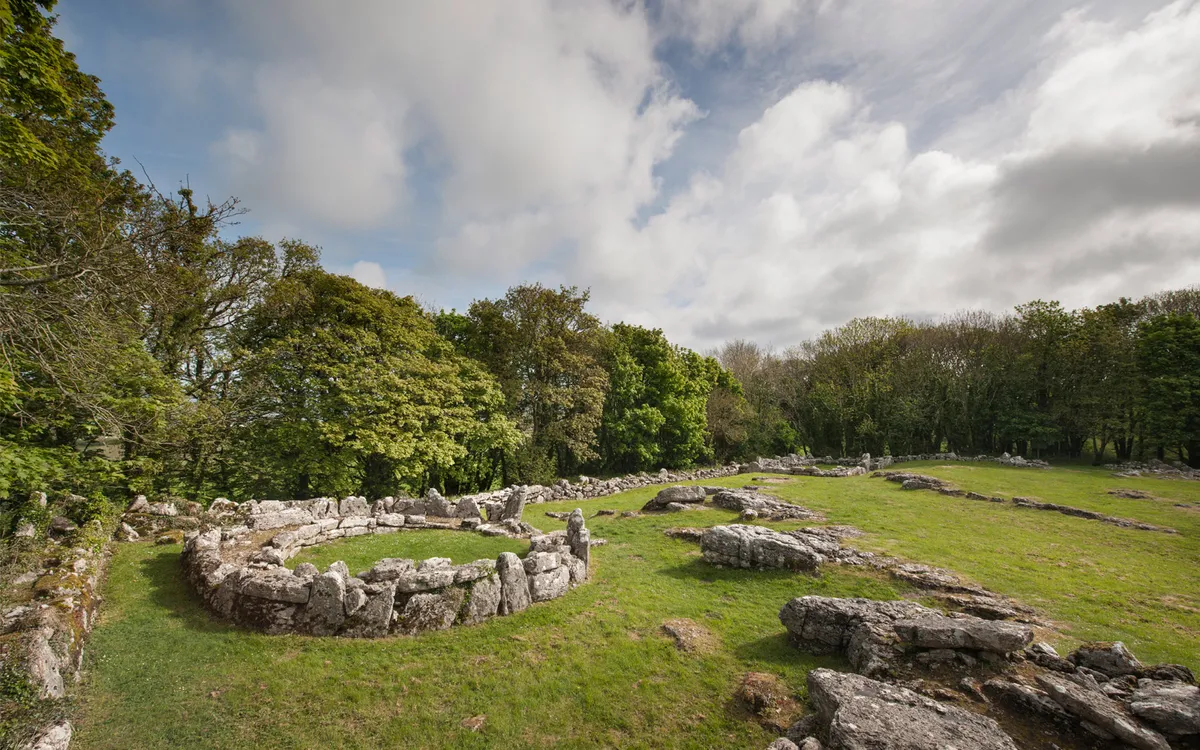
One of my favourite historic sites on the island is the little known Romano-British village of Din Lligwy. Hidden away in a small woodland clearing, a handful of round stone enclosures now define a series of hut circles, which almost certainly would once have been thatched. Excavations have revealed several key items such as coins and tools from the 3rd and 4th centuries AD, when the Roman occupation of Britain was still underway.
The impressive reconstructions of Iron Age huts at Llynnon Mill just a few miles away give a real sense of what Din Lligwy might have looked like, but its unique stone foundations single it out as a rare find from a period when much of the late Iron Age and early Roman occupation has been lost.

Lligwy’s inhabitants would have been experts at smelting and iron working. Yet Anglesey’s industrial history can be traced back even further, to at least the Bronze Age. Rich deposits of copper underneath Parys Mountain were mined for millennia. By the 18th century, the mountain had been developed into one of the biggest copper mines in the world, and the pretty port of Amlwch nearby, which served the mines, was in its heyday. Today, the copper industry is celebrated in Amlwch’s Copper Kingdom Centre. To get an idea of just how much copper was mined, you need to take a trip up to Parys Mountain itself. This unique and colourful Martian landscape is both breathtaking and surreal, and a place not easily forgotten.
On the ebb tide, a huge swathe of flat sand stretches to sea for miles
If, like me, you’re a Land Rover nut, then a further stop south at Red Wharf Bay is a must. In stark contrast to the windswept beaches of the west coast, it has an altogether different feel. Wide and flat, its shoreline is surrounded by deciduous woodlands, more reminiscent of a Cornish cove than the north Welsh coast. The ebb tide reveals a huge swathe of flat sand that stretches out to sea for miles. It was here in 1948 that Maurice Wilks first trialled his new post-war people’s utility vehicle that would become the Series One Land Rover. Over 60 years later, and the final variants, along with a Series One, returned to Red Wharf bay for a symbolic finale photo shoot, and the backdrop could not have been better as they drove in wide sweeping arcs across the sand to recreate the outline of Wilk’s original design.
Anglesey’s main centre is Llangefni, but it’s also home to the village of lanfairpwllgwyngyllgogerychwyrndrobwyll-llanty siliogogogoch, otherwise known as Llanfair PG, famously having the longest name in the world.
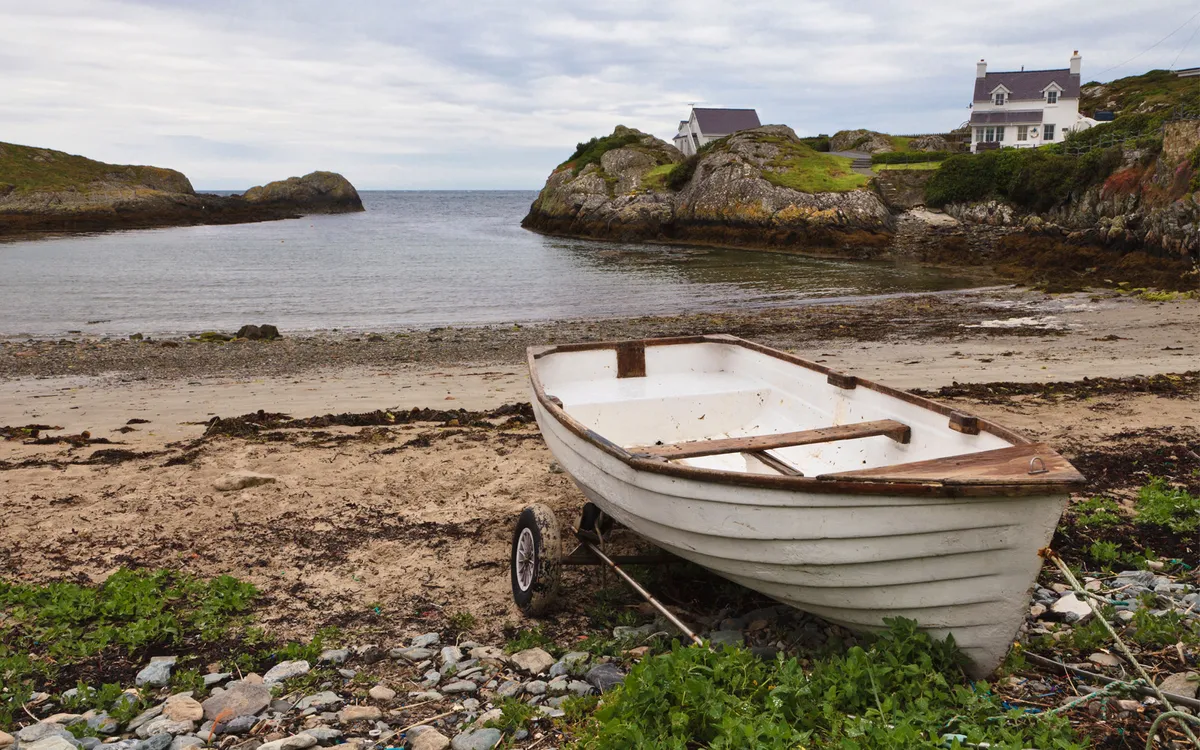
Yet without doubt one of my favourite haunts is the historic town of Beaumaris. When Edward I set about his conquest of Wales in 1281, he planned to create a ring of stone around the newly conquered country. In what is still the biggest state-sponsored building programme in history, he built a striking network of castles and administrative centres around the Welsh coast so they could be resupplied by sea if besieged. The cost – £100,000 – consumed the entire national budget for a year. In today’s terms it would equal trillions. It is said that for over a decade, it was impossible to find a mason this side of the river Somme, so great was the manpower needed to create a line of fortresses that still dominate the Welsh landscape and its history today. The castle at Beaumaris, around which the town grew up, is widely regarded as one of the best, and not just in preservation but in design. Arranged concentrically, it was the most advanced of its day and continues to inspire.
With so much to see and do on this captivating island, it’s clear that any introduction can only really scratch the surface. I’ve been exploring it for more than 20 years and it still surprises and delights me. Of course the best way to really make sense of Anglesey is to go there, which I hope I’ve now persuaded you to do. All of which leaves you only one further option to choose. Which bridge will you use? Either will carry you to a very special place…

Prehistoric Anglesey
Anglesey is widely regarded as having as one of the most important prehistoric landscapes in Europe. With 89 prehistoric scheduled monuments, including standing stones and 30 chambered tombs, the small size of the island makes it the perfect place in which to study many key principles of British prehistory.
Bryn Celli Ddu has been occupied from at least Mesolithic times, 6,000 years ago, when a simple circular bank and ditch or henge was dug. The chambered tomb, which sits within the earlier henge, was probably built during the Neolithic period, a time that saw the emergence of farming. Excavations in 1928-29 revealed human bones and tools dating it to around 2,000BC. Notably it was aligned on the axis of the summer solstice, such that sunlight would briefly shine up the passage and illuminate the chamber. The religious significance of the tomb’s contents and its alignment make it one of the most important monuments of its kind in Britain.

Wildlife
Some 220 square miles of Anglesey are designated Areas of Outstanding Natural Beauty, with huge swathes on the coast. Newborough Warren National Nature Reserve on the south western tip of the island is a unique environment. It was formed following a freak weather event in the 14th century, which covered much low-lying farmland around Newborough town with sand. Today it is a mixture of dunes and marram grass, forest and salt marsh, home to marsh helleborines and northern marsh orchids. Wander through the dunes for a spectacular view of the entire Snowdonian range from east to west, and hopefully catch a glimpse of the cattle and ponies that now help to graze and manage the reserve.
Where to eat
1. Halen Mon Salt
As an island, Anglesey is famous for its seafood, including a wide range of fish and shellfish, not least Menai mussels and lobster. The perfect complement is locally harvested sea salt. A small but enterprising family business, Halen Mon has developed over the past 20 years to achieve rare European Protected Designation of Origin Status in 2014, putting it alongside Parma ham, Champagne and Stilton.
Places to stay
1. The Bull, Beaumaris

Very much in the new boutique bracket, the Bull and its welcoming staff combine all the character and charm of an old coaching inn, with the attention to detail and modern comforts of a destination hotel. The Brasserie serves a range of enticing and locally sourced dishes, and the traditional bars provide the perfect spot for a cosy evening. bullsheadinn.co.uk
2. Tre-Ysgawen Hall, Capel Coch
If you fancy a pamper, Tre-Ysgawen Hall could be for you. More centrally located near the island’s capital Llangefni, this sumptuous country hotel is set within beautiful grounds, while also offering a superb spa with a range treatments. The restaurant is highly regarded, rounding off the perfect country house package, yet within easy reach of the coast and other attractions. treysgawen-hall.co.uk
3. Menai Holiday Cottages

With more than 250 cottages on Anglesey, Menai Holiday Cottages has a good selection of accommodation available via its excellent website, which presents some of the best abodes the island and wider region has to offer. Whether you fancy classic coastal or cosy countryside, there are some beautiful and memorable choices, many of which will let you take your dogs along, too. menaiholidays.co.uk
4. Chateau Rhiafa
An opulent fairytale chateau with stunning views across the Menai Straight to mainland Wales and the Snowdonia National Park. This grade II-listed building, built in 1849, is the perfect lodging for a special occasion. chateaurhianfa.com
5. Witchingham B and B
A clean, friendly and comfortable guest house set in the north of Holyhead, the island’s largest town. A great location for accessing local beaches, pubs and the Anglesey Coast Path. witchinghambandb.com

6. South Stack Coastal Retreats
A collection of country houses, guest rooms and cottages set within the grounds of an elegant, early 20th-century Arts and Crafts House. There are breathtaking views out to sea and across to Snowdonia, while closer to home lies Trearddur Bay beach and South Stack Lighthouse. southstackcoastalretreats.co.uk
7. Penrhyn Bay Caravan Park
Situated within an Area of Outstanding Natural Beauty on the west coast of the island, this beautifully located caravan park is the perfect holiday retreat for families. Spend the day at the Anglesey Sea Zoo or Pili Palas nature world, then stroll down to the sweeping sands of Penrhyn Bay and watch the sun sink down. penrhynbay.com
8. Anglesey Yurts
Set within the secluded orchard on a traditional smallholding in north-west Anglesey, this luxury campsite provides the perfect base for adventurers. After a day of exploration, head back to your yurt and relax in a hammock beside the fire pit. anglesey-yurts.co.uk
Places to eat
1. White Eagle, Rhoscolyn Bay
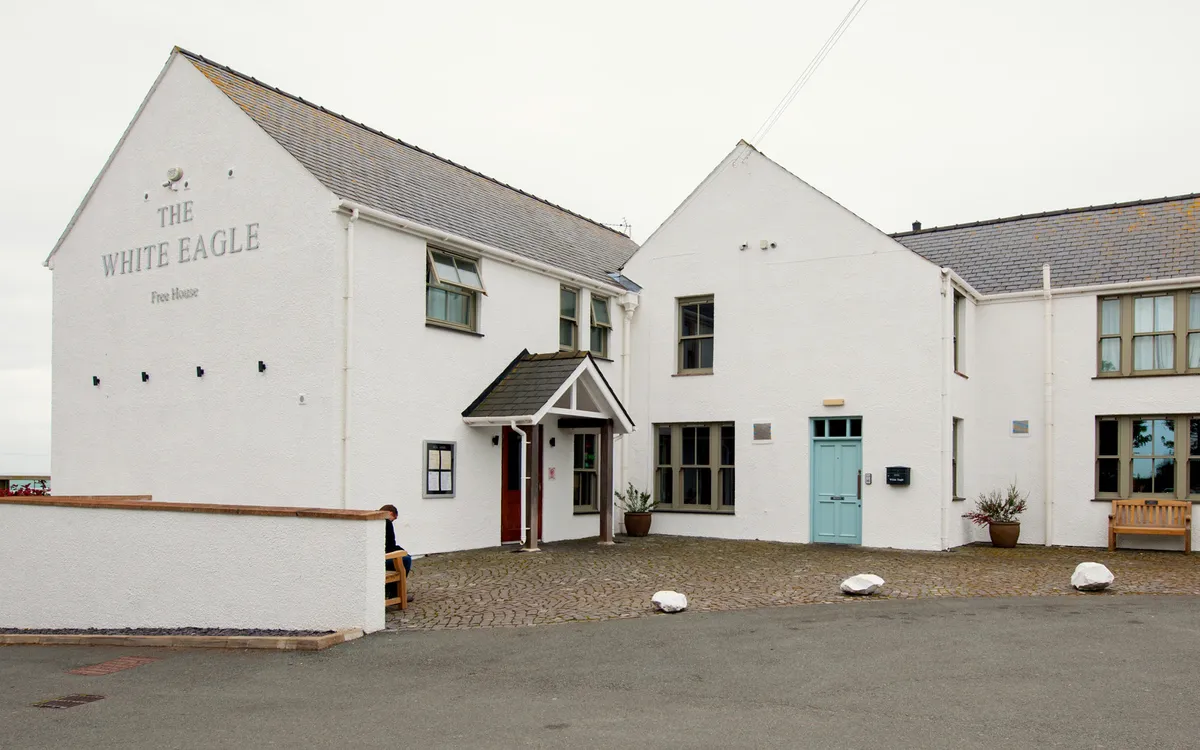
Although it does not offer accommodation, many holiday lets surround the bay, and if you fancy a sunny day on the beach, or a blustery winter walk along the shoreline, the White Eagle is perfect for coffee or more. Sunday lunch here is a must, and it also has plenty of parking. white-eagle.co.uk
2. Red Wharf Bay pubs
If you find yourself by Red Wharf Bay, you are spoilt for choice. At the bay itself, either the traditional Ship Inn or trendier Boathouse will delight you, but the views from the Tavern on the Bay, located up the hill in a slick new caravan park, take some beating, as does the gastro-pub menu. shipinnredwharfbay.co.uk
Map
